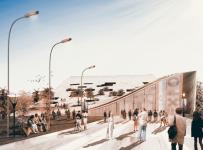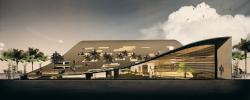The computer’s role in the design process was initiated to repeat the human effort in the design process and the computer tried to being beside the human in the design process. After a while, this role was changed, and systems were growing to be a smart design’s aid. Today, the computer’s role is more than the scope of a drawing or modeling tool, and it can play as a form factor and architectural information processor. The facilities of the digital environment have created new literature on architectural projects. This literature begins from an early stage of concept to the end of construction. In the meantime, various analyzes and estimates made by using the computer in the shortest time with the least cost.
Most of the houses which are located in central cities in Iran are comprised of the central courtyard and it becomes an iconic element of Iranian architecture. The Expo 2020 will be accurate in Dubai, which has the same iconic elements of architecture and weather in some way with some cities in Iran. This project tried to find the best way to combine central courtyards on one surface. On the other hand, this computational approach explores the best volume which has minimum energy reduce, and daylight for the human comfort zone. Moreover, it explores the best way to view optimization and easy way to move within the pavilion. The computer provides a wide range of possibilities to combine traditional architecture with new facilities in a best-optimized way. The combination of this spatial computational approach and traditional architecture tries to embody the Expo’s theme ‘Connecting Minds, Creating the Future’ and subthemes ‘Opportunity, Mobility, and Sustainability’, drawing inspiration from vernacular architecture and the natural environment. Furthermore, the concept of sustainability has been integrated into the planning of the final form. The main material has chosen is sand, which was the main material used in traditional Iranian cities. However, it has benefited from the new technology of sand structures with a thin layer.
Finally, nobody can deny that existing urban planning and design systems do not effectively support a fast iterative design process capable of generating and evaluating our future problems in cities and architecture. Therefore, we need to explore every other way to find a way to solve our problems, which is next to impossible without technology.
2016
0000
Favorited 4 times













